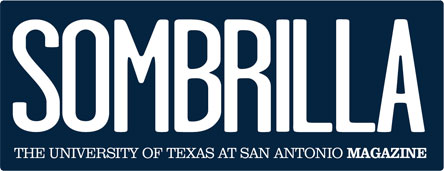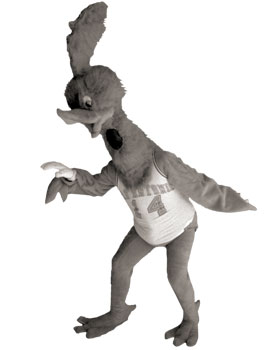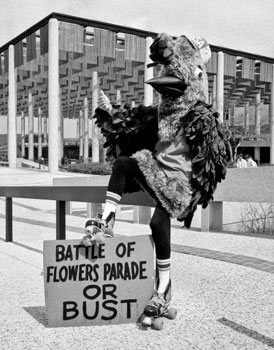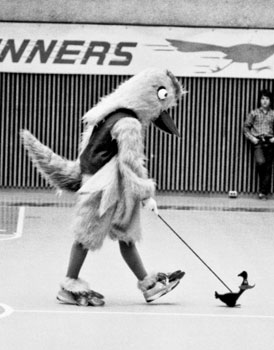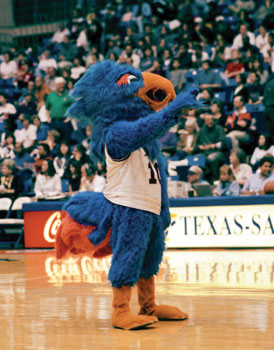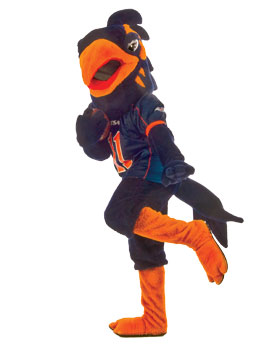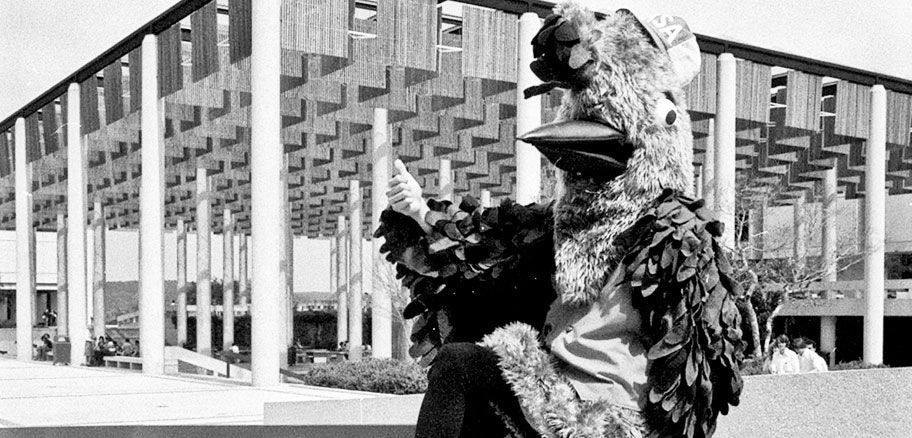
Bird Watching
You've Come a Long Way, Rowdy
During a series of elections in 1977, either a star or an armadillo was supposed to become UTSAÔÇÖs mascot. But like any good sporting tale, the roadrunner made a comeback and prevailed in a final student vote over the armadillo. And Rowdy the Roadrunner was born. The university mascot has had a few makeovers through the years. And can we just say, we believe theyÔÇÖve definitely been for the better.
A Bird in the Hand
The genesis of the roadrunner hand sign
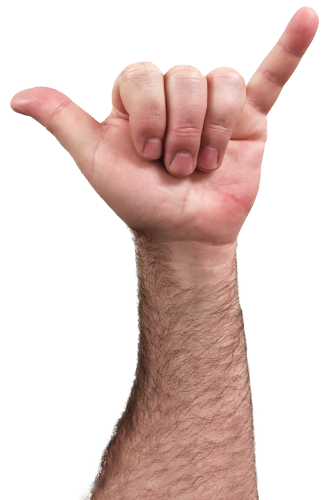
The story about how the roadrunner hand sign came to be is another bit of legend where memories and recollections have to be trusted. Back in 2010, Joe Michael Feist, Sombrilla MagazineÔÇÖs associate editor, wrote that the story unfolded on a Thursday night at Wurstfest in New Braunfels in 1979, when there were signs, signs, everywhere a sign. Except a roadrunner hand sign. And that didnÔÇÖt seem right to a group of pledge brothers from UTSA about to join Sigma Phi Epsilon fraternity.
Charles Guerra ÔÇÖ84, who was there that night, claims that was the birth of the roadrunner hand sign as we know it today. ÔÇťIt was some kind of college night,ÔÇŁ says Guerra, who earned a B.B.A. in fi nance and economics. ÔÇťThere were kids from colleges all over Texas. And they all started doing their hand signalsÔÇöthe gig ÔÇÖem from the Aggies, hook ÔÇÖem from the Longhorns, the Baylor claw. And somebody asked where we were from and what our mascot was. UTSA wasnÔÇÖt very well known then. We said ÔÇśRoadrunners,ÔÇÖ and they asked what our hand sign was. We realized we didnÔÇÖt have one.ÔÇŁ
Fueled by a few cold beverages, a ÔÇťcreative spiritÔÇŁ took hold of the group, Guerra recalls.
Eddie Rios ÔÇÖ85 (B.B.A. in marketing) was another pledge brother at Wurstfest that night: ÔÇťWe all started talking about school spirit and traditions, and just began trying out different signals with our hands. Soon, we started throwing out the thumb and the pinkie and yelling beep-beep like the roadrunner cartoon.ÔÇŁ
It seemed to fit, Guerra remembers: ÔÇťSomebody said the thumb is the beak and the little finger is the tail.ÔÇŁ
The pledge brothers took their creation back to campus where, Guerra adds, there werenÔÇÖt many opportunities to flash the sign. There were no intercollegiate sports at the time; basketball wouldnÔÇÖt start for another two years. But the hand signal survived, ultimately thrived and became, at least for UTSA, the sign of the times.
